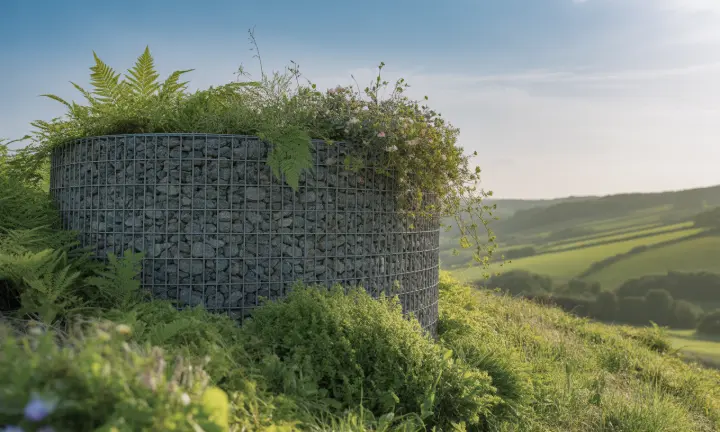Roadways, riversides, and construction areas are vulnerable and prone to erosion, leading to degradation of land, sediment pollution, damage to infrastructure, and high upkeep costs. Therefore, it becomes necessary to manage the environmental deterioration exposed by intense water, wind, and human activities. Here, the traditional and innovative erosion control methods hop in to stabilize soil and protect land.
In this article, we’ll discuss the effectiveness of erosion control methods for roadways, riversides, and construction areas to enhance landscape productivity.
What Is Erosion, And How Does It Impact The Areas?
Erosion is the process of soil displacement by potential water, wind, and human activities. The dislodged particles are in motion, driven by gravity. The transported sediment particles clog the waterways, infrastructure, and drainage, degrading the ecological spaces. The highly impacted erosion areas are:
- Roadways: The constant vehicle flow and earth radiation cause the dislodging and wearing away of soil particles. The removal of topsoil is alarming, as it's enriched with plant nutrients, organic substances, and biological productivity.
- Riversides: Erosion near the riverside affects the aquatic ecosystem, destroying the habitats of aquatic species and reshaping the streams and riversides. It leads to eutrophication, the extravagance of nutrients in water, such as phosphorus and nitrogen.
- Construction areas: Construction involves movement, and the continuity of movement through grading ruins soil quality, pollutes water, and impacts animals and plants. Contractors should employ effective erosion control methods to prevent vegetation degradation.
Efficient Erosion Control Methods
The most efficient erosion control methods to prevent soil displacement are:
Vegetation cover
Heavily installing vegetation in erosion-prone areas can help prevent degradation. It is an eco-friendly erosion control method that protects topsoil from rain, water, and wind runoff. Shields the root system while stabilizing the ground level. The vegetation process involves a few techniques, including:

Erosion Control Blankets
Geotextiles are permeable fabrics that are used for filtration, separation, and reinforcement, engineered from synthetic polymers. It improves soil stability and reduces erosion.
Geogrids provide a stabilized surface to the soil with their reinforcing function. It is immaculate for slope stabilization and load distribution. These are easy-to-install and lightweight erosion control equipment used in wall backfills, disturbed road embankments, landfill liners, and drainage to enhance the soil’s structure.
Riprap Gabions
Riprap is an extensive layer of angular rocks that is spread to control soil erosion and scour in high-wave energy areas. It is deployed in areas susceptible to water, protecting structural integrity and dissipating wave energy. These boulders are usually placed along riversides, shores, and bridge piers called riprap. It shields the soil from the hydraulic force. Rock armour is an easy-to-maintain and highly resistant erosion control method. You can also add a layer of vegetation and soil for better integration.
Sediment Control Barriers
Silt fences are sediment control barriers engineered from geotextile fabric fastened by stakes to ensure sediment–laden runoff. It allows water to remove soil particles and create a safer space for riverbank species. Other sediment control barriers can have fiber rolls, gravel filter berms, and check dams. In today's fast-paced technology, one can integrate turbidity sensors in silt fences to alert management for maintenance.
Retaining Walls
Retaining walls hold soil from washing away and prevent landsliding. Whereas, terracing is used to create steps on slopes to increase the filtration process and minimize erosion. Retaining walls are usually made up of concrete blocks, stone, timber, and gabion baskets.
Compost and mulching blankets
Mulch is a composition of straw, woodchips, and shredded bark that is laid over the soil to protect it from rain. It retains moisture from the surface and prevents erosion. One of the erosion control methods is compost blankets, which accelerate plantation with their microbial and soil fertility-enhancing capability. These blankets naturally shield the soil and seed germination.
Geocells
Cellular confinement cells, or geo cells, are three-dimensional honeycomb grids curated from high-quality polythylene. It creates a stable structure for soil filled with concrete stones, gravel, and sand. These cells help in reducing the lateral movement of the soil and distributing the load. Maintain the soil moisture with effective coatings to minimize heat absorption.
Conclusion
Erosion control methods are effective for maintaining infrastructure, stabilizing slopes, and shielding riversides from soil displacement. Both traditional and innovative methods can be adopted for a sustainable solution. One can support environmental stewardship by contributing to the right erosion control practices. You can ensure the resilience of structures and healthy vegetation with innovative erosion control solutions.
At Hitech Gabion, we serve diverse erosion control methods for soil erosion and innovative solutions to prevent it. Learn more about our erosion-controlling products today!